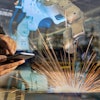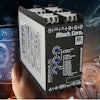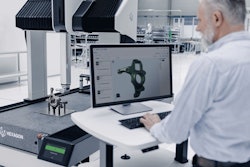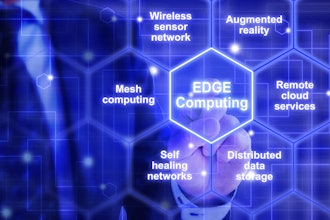Laptop computers and electric and hybrid cars share a common dilemma: the amount of electrical energy they can store is limited. Laptops were first powered by nickel-cadmium batteries; that gave way to nickel-metal hydride, which was in turn supplanted by various types of lithium batteries. As lithium-ion batteries (Li-ion) become better and more affordable they find new applications - from military equipment to hybrid cars. Electric cars started with lead-acid, but the Prius and similar cars now use nickel-metal hydride batteries. They, too, will soon be using Li-ion batteries, according to Ralph Wise, director of technology at Ultralife batteries.
While Li-ion batteries pack more energy by weight or volume than other types, they’re not as good in power density, and as yet are not appropriate for applications that require heavy currents. One factor that has delayed the acceptance of Li-ion batteries has been safety. Simply put, the more energy crammed into a small space, the more damaging a failure can be. In recent years, however, the people who design Li-ion batteries and the people who design them into equipment have developed ways to prevent minimize danger. In terms of complexity of charging, lead acid is probably the simplest, followed by nickel-cadmium; both can be trickle charged, if maximum simplicity is needed, and both will forgive moderate overcharging. Nickel metal hydride is the most complex, requiring a charger that watches for a change in the sign of the second time derivative of the cell voltage (i.e., the point at which cell voltage begins to decrease at the end of charge). Li-ion is fairly straightforward: Charge at the 1C rate (a current equal, in amps, to the rated amp-hour capacity of the battery) until the battery reaches 4.2 V per cell, hold that voltage until the current falls to C/10, then stop, according to Wise. This charging profile is similar to one often used with lead acid batteries. There are two simple ways to destroy a Li-ion battery: overdischarge it and overcharge it at high temperatures. Overdischarge is fairly easy to prevent: include a circuit that shuts the equipment down when the battery voltage reaches a certain point. The high temperature overcharge problem has the potential to result in thermal runaway, in which the battery dumps all its energy into heat. There are ways to get around this as well. For example, Ultralife puts two fuses into some of its batteries. One, which opens at 71°C, is reversible; it won’t allow the battery to accept any charge when it gets to that temperature but closes again when things cool down. The other fuse opens irreversibly at 90°C. “if the battery sees 90°C we don’t even want people discharging it,” says Wise. Faster Wi-FiWireless networking continues to gain in popularity, and Wi-Fi (wireless Ethernet) is almost ubiquitous. Wi-Fi has gone through several phases and the present version, IEEE 802.11g, runs at 2.4 GHz and provides speeds of 54 Mbps. It’s found in laptops and other devices, and there are Wi-Fi hotspots in offices, coffee shops, and elsewhere. There are plans to make entire cities into Wi-Fi hotspots; Cerritos, CA and Spokane, WA have done so already, Philadelphia and San Francisco are in process, and there are even calls to do the same with the entire state of Rhode Island. But as more and more people demand more and more capacity and want to download more and more things, Wi-Fi’s 54 Mbps speed seems inadequate to many people. The result is a new version of Wi-Fi, IEEE 802.11n, which promises speeds to 600 Mbps (which may be closer to 100 Mbps in actual use) and possible longer range than 802.11g, and is designed to be backward compatible with the 802.11g. IEEE 802.11n uses several methods to gain this high speed: MIMO (multiple-input multiple-output using multiple transmitter and receiver antennas), OFDM (orthogonal frequency division multiplexing), and others. It’s expected to make technologies such as video downloading practical. Hardware for 802.11n it is available now, which is a little strange because the 802.11n standard is still in draft form. “We’re expecting the full standard by....no later than the middle of next year,” says Craig Mathias, principal of the wireless industry analyst, The Farpoint Group. As far as the products that are calling themselves “Draft N Compliant,” he says, “You can’t be compliant with a draft. The IEEE doesn’t allow that.’ On top of that, the Wi-Fi alliance has stated that it will not certify pre-standard 802.11n features.” So what’s going on, and how good are the products? Farpoint tested several of these “Draft N Compliant” devices and found out that not only were different makers’ units unable to communicate with each other, but also some of them couldn’t even communicate with themselves at 802.11n speeds. They may eventually, says Mathias, and “driver and firmware upgrades may fix some of these problems, but the bottom line is, no one should buy a product just because it’s compliant with Draft N.”
Smaller but Familiar
Windows is by far the most-used operating system, and millions of people are familiar with it. With so many users it might seem logical to use it for embedded applications, but Windows has some serious disadvantages when it comes to embedded application: it’s enormous, for one thing — “almost at 2 G for a standard XP image,’” says Patric Dove, application engineer at Advantech — and requires a fair-sized hard drive just to hold the OS image. It’s slow to boot. It’s vulnerable to corruption and viruses. On the other hand, there’s a huge amount of software that runs under Windows, and, as mentioned, almost everybody is familiar with it.






















